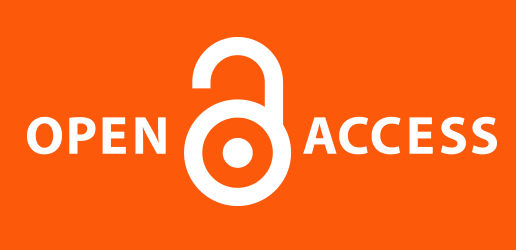|
International Journal for Research Trends and Innovation
International Peer Reviewed & Refereed Journals, Open Access Journal
ISSN Approved Journal No: 2456-3315 | Impact factor: 8.14 | ESTD Year: 2016
Scholarly open access journals, Peer-reviewed, and Refereed Journals, Impact factor 8.14 (Calculate by google scholar and Semantic Scholar | AI-Powered Research Tool) , Multidisciplinary, Monthly, Indexing in all major database & Metadata, Citation Generator, Digital Object Identifier(DOI)
|
Issue: October 2025
Volume 10 | Issue 10
Review Result and Publication of Paper within : 2-3 days
Click Here For more DetailsFor Authors
Forms / Download
Published Issue Details
Editorial Board
Other IMP Links
Facts & Figure
Impact Factor : 8.14
Issue per Year : 12
Volume Published : 10
Issue Published : 113
Article Submitted : 18245
Article Published : 7789
Total Authors : 20583
Total Reviewer : 750
Total Countries : 142
Indexing Partner
Licence
This work is licensed under a Creative Commons Attribution-NonCommercial 4.0 International License







|
Published Paper Details
|
|
| Paper Title: | Prevalence of sensorineural hearing loss in patients with and without giddiness in head injury |
| Authors Name: | Chandra Vamsi. S , Shomnath T , Shyam Sudhakar |
| Download E-Certificate: | Download |
| Author Reg. ID: |
IJRTI_185492
|
| Published Paper Id: | IJRTI2303045 |
| Published In: | Volume 8 Issue 3, March-2023 |
| DOI: | |
| Abstract: | Introduction: Hearing loss can be conductive, sensorineural, or mixed; conductive hearing loss arises from the ear canal or middle ear, while sensorineural hearing loss arises from the inner ear or auditory nerve. This study is conducted on the patients with sensorineural hearing loss in head injury with and without giddiness. Objective: To investigate the prevalence of sensorineural hearing loss in patients with and without giddiness in head injury. Methodology: This is a questionnaire-based study among the patients of Saveetha Medical college and Hospital over a period of 3 months. We conducted clinical trials for vestibular examination with the following five methods: Dix Hallpike test, finger to Nose test, Romberg test, Unterberger test, PTA. Co-relation test was conducted using Pearson’s method. Results: Ninety-five (95) patients have participated in this study. The mean age is 39.74 ± 10.98 years. The male and female ratio is 1.96:1. The mean value of patients with hearing loss is 8.74 ± 1.49. The mean value of patients with giddiness is 7.22 ± 1.48. The correlation co-efficient of Hearing loss compared with Psycho-social problems is 0.947, whereas the correlation co-efficient of Giddiness compared with Psycho-social problems is 0.167. Conclusion: This study reveals that the vestibule adapts to the affected ear to compensate the Giddiness, which concludes that prevalence of Hearing loss is more commonly seen than Giddiness in patients with head injury. |
| Keywords: | Sensorineural hearing loss, Giddiness, Head injury, and Vestibular apparatus. |
| Cite Article: | "Prevalence of sensorineural hearing loss in patients with and without giddiness in head injury", International Journal of Science & Engineering Development Research (www.ijrti.org), ISSN:2455-2631, Vol.8, Issue 3, page no.268 - 273, March-2023, Available :http://www.ijrti.org/papers/IJRTI2303045.pdf |
| Downloads: | 000205123 |
| ISSN: |
2456-3315 | IMPACT FACTOR: 8.14 Calculated By Google Scholar| ESTD YEAR: 2016 An International Scholarly Open Access Journal, Peer-Reviewed, Refereed Journal Impact Factor 8.14 Calculate by Google Scholar and Semantic Scholar | AI-Powered Research Tool, Multidisciplinary, Monthly, Multilanguage Journal Indexing in All Major Database & Metadata, Citation Generator |
| Publication Details: |
Published Paper ID: IJRTI2303045
Registration ID:185492
Published In: Volume 8 Issue 3, March-2023
DOI (Digital Object Identifier):
Page No: 268 - 273 Country: SRIPERUMBUDUR, Tamil Nadu, India Research Area: Medical Science Publisher : IJ Publication Published Paper URL : https://www.ijrti.org/viewpaperforall?paper=IJRTI2303045 Published Paper PDF: https://www.ijrti.org/papers/IJRTI2303045 |
| Share Article: | |
|
Click Here to Download This Article |
|
| Article Preview | |
|
|
|
Major Indexing from www.ijrti.org
| Google Scholar | ResearcherID Thomson Reuters | Mendeley : reference manager | Academia.edu |
| arXiv.org : cornell university library | Research Gate | CiteSeerX | DOAJ : Directory of Open Access Journals |
| DRJI | Index Copernicus International | Scribd | DocStoc |
ISSN Details
 |
 |
ISSN: 2456-3315
Impact Factor: 8.14 and ISSN APPROVED,
Journal Starting Year (ESTD) : 2016
DOI (A digital object identifier)
 Providing A digital object identifier by DOI.ONE How to Get DOI? |
Conference
Open Access License Policy
Important Details
Join RMS/Earn 300
WhatsApp
Click Here
Click Here
Indexing Partner |
|||
| Copyright © 2025 - All Rights Reserved - IJRTI | |||






